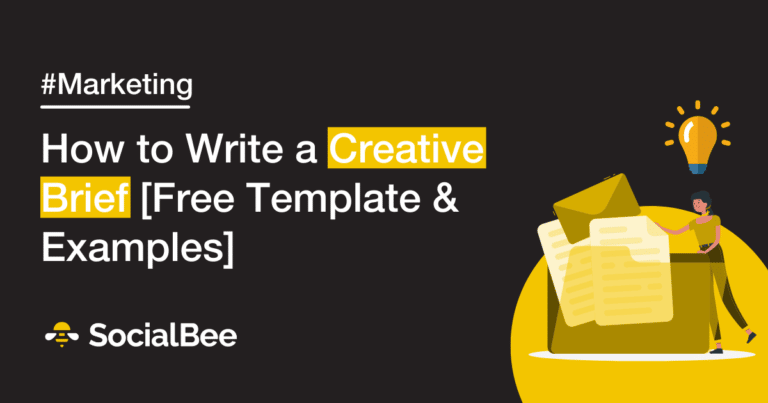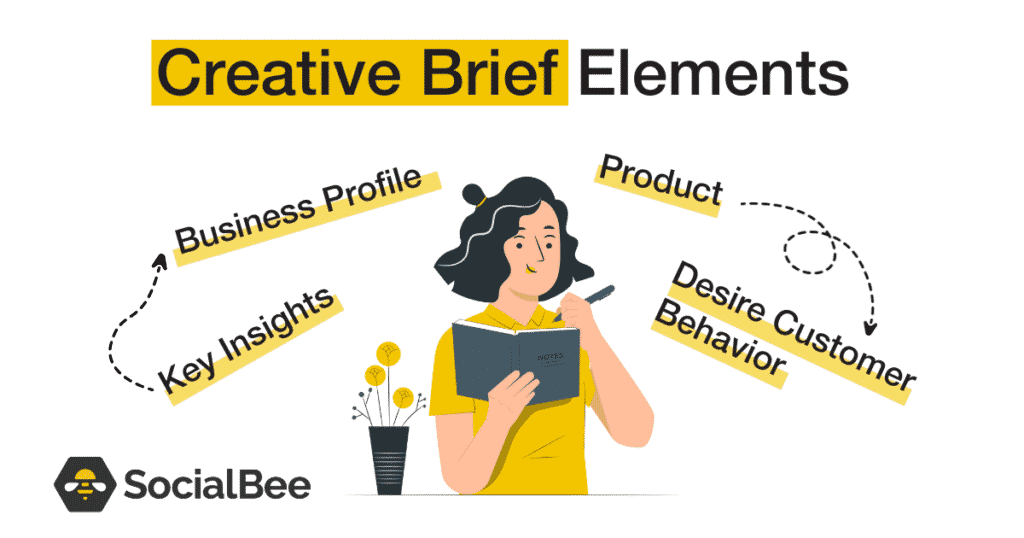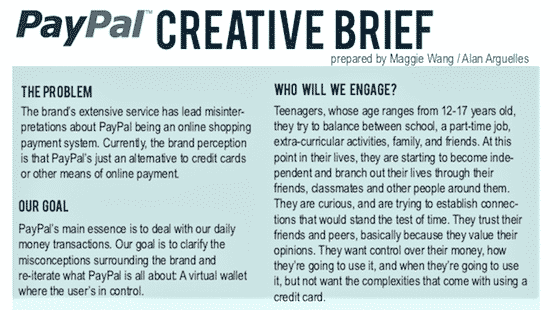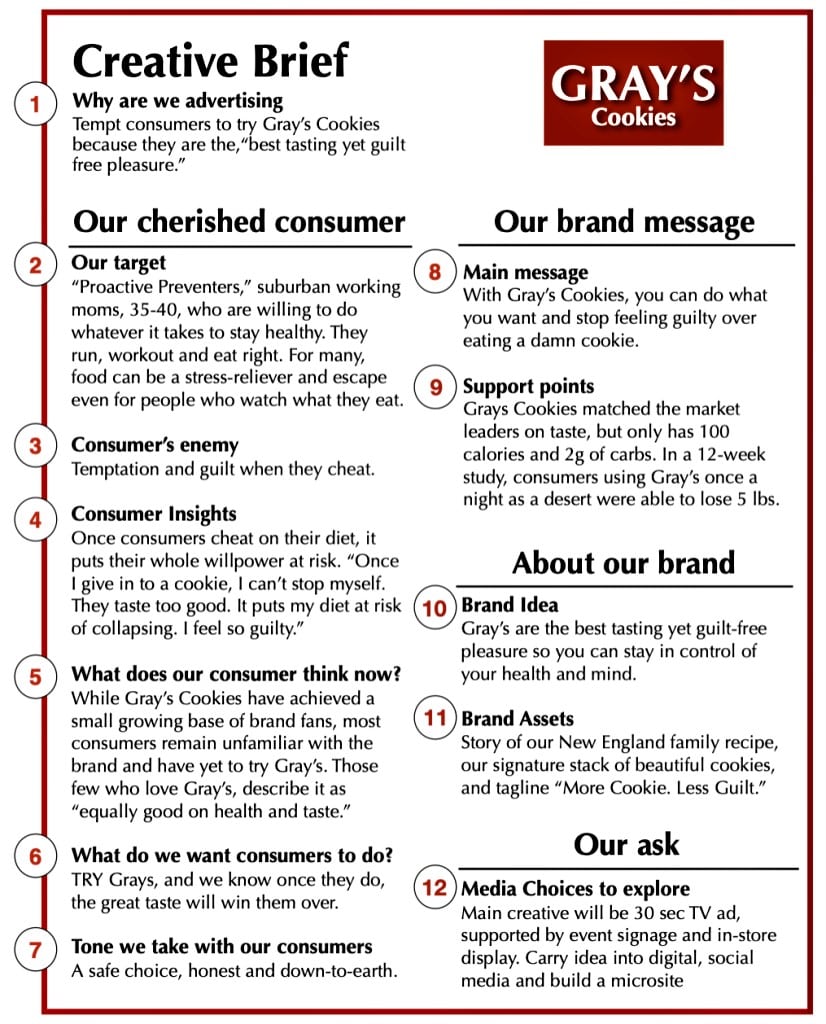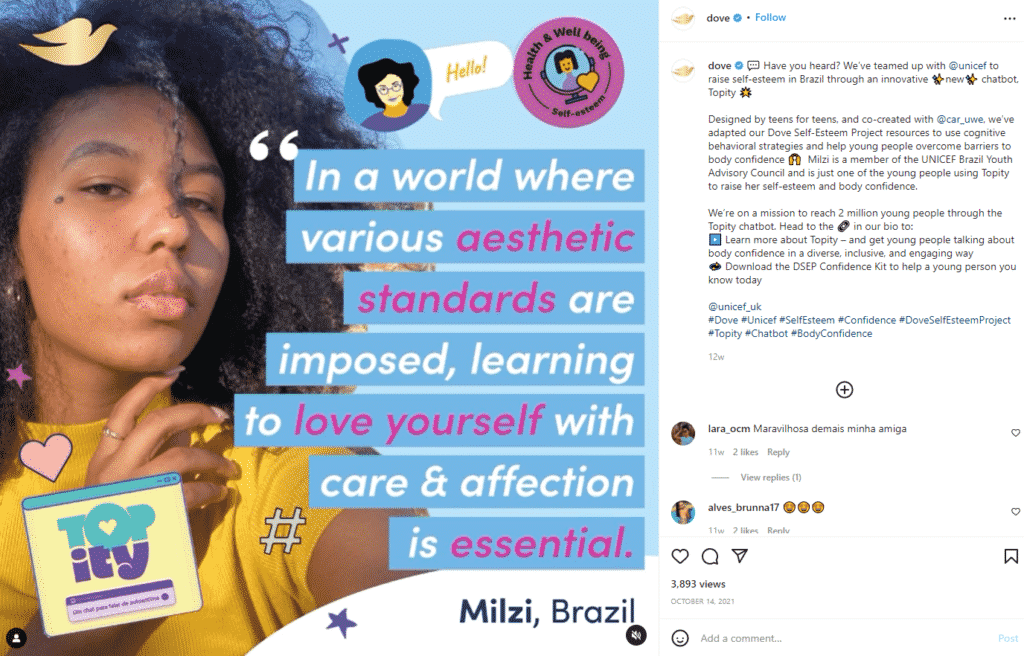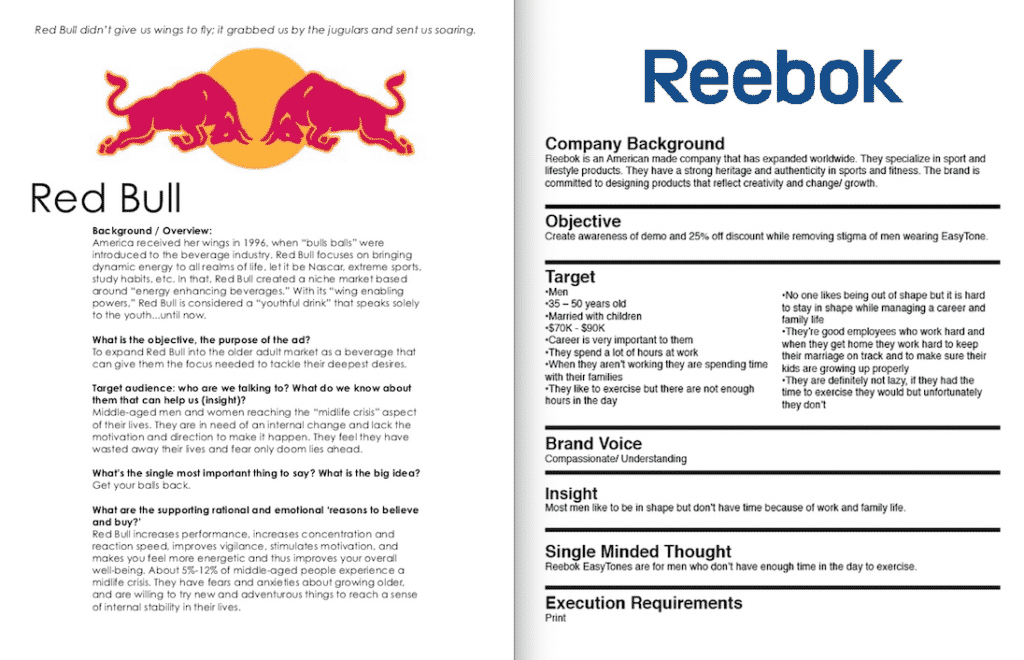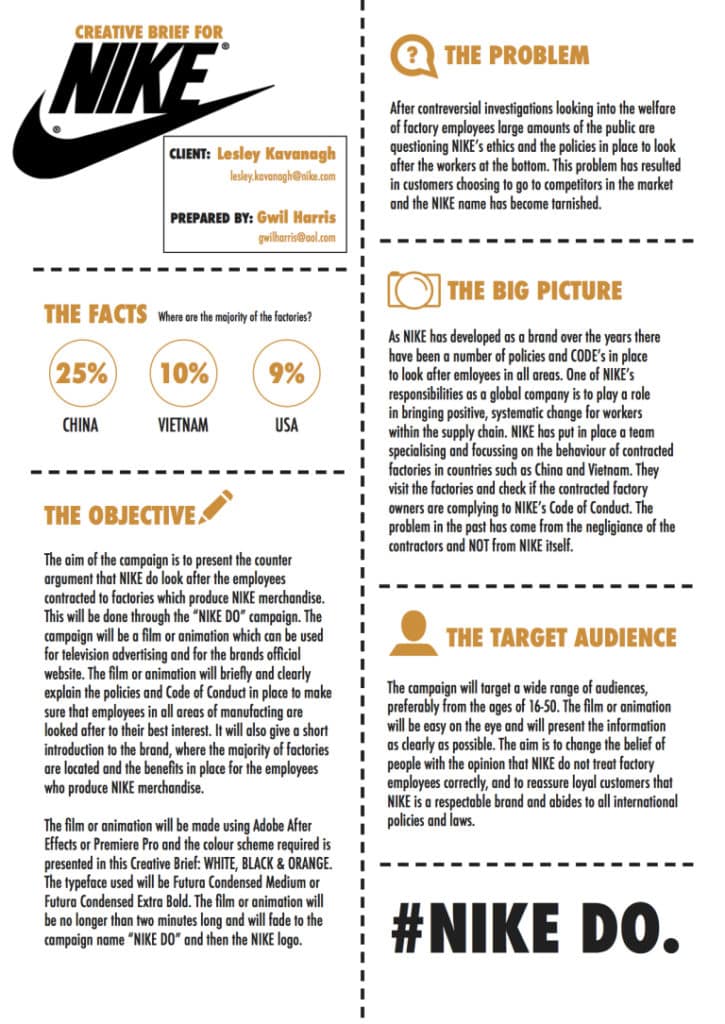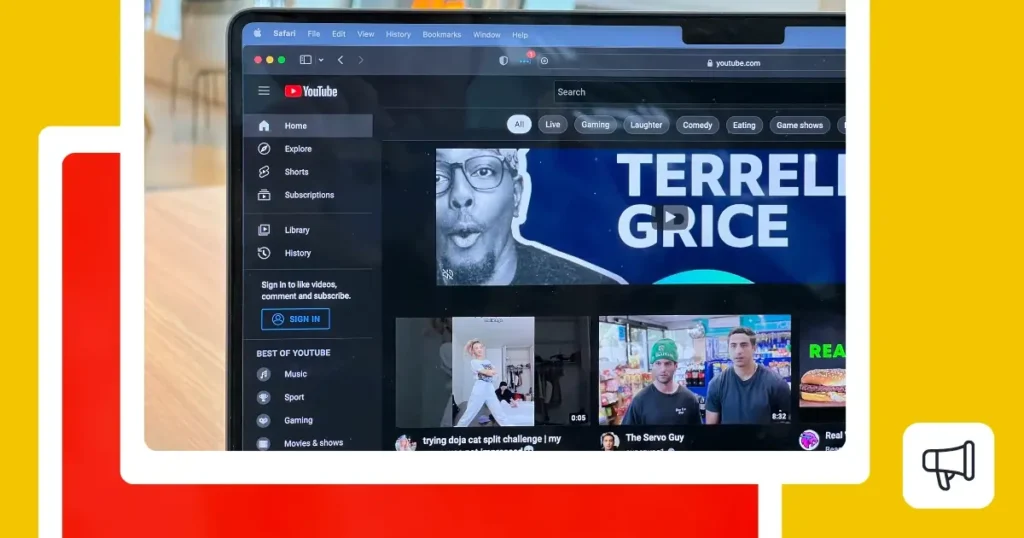
Content Writer
There comes a time in the life of every business professional when they need to create a creative brief, and the first questions that pop up are What are the elements of a creative brief? and How do I write one?
But don’t worry, we are here to provide you with some insightful answers.
As we all know, there’s much more to a creative process than just being creative.
Before starting, you need an effective plan that sets the tone for your future strategies. And in this case, your plan is called a creative brief that can be used for multiple business projects and digital marketing campaigns.
In today’s article we will talk about:
- What is a creative brief
- The 20 essential elements of a creative brief
- How to write a creative brief
Let’s get started!
We’re SocialBee LABS SRL, part of WebPros. We use the information you provide to share relevant content and product updates, as outlined in our Privacy Policy. You can opt out anytime.
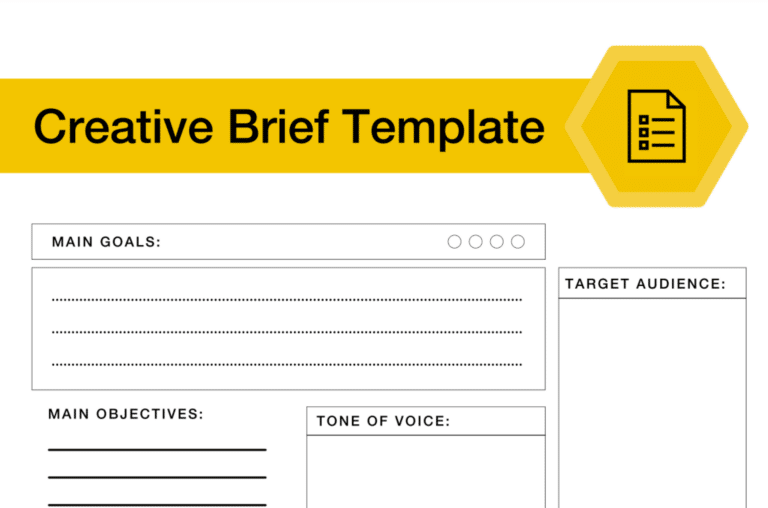
What Is a Creative Brief?
Let’s see how we can define this concept a bit better so we can understand what we’re working with.
So a creative brief is a document used by creative professionals, marketing departments, and diverse agencies to:
- Outline a creative project and its progress
- Develop creative deliverables such as marketing campaigns, visual designs, promotional videos, advertising, websites, print ads, and more creative assets
- Brainstorm creative ideas
The document is usually developed in the initial stages of the creative marketing process by the requestor, which in most cases happens to be a marketing team member, creative project manager, or account manager.
But no matter who creates the brief, they should be in close consultation with the client. After a thorough analysis, it is then approved by the creative team of graphic designers, writers, and project managers.
The creative brief is one of the many tools marketers have that ensure their marketing and advertising campaign materials connect with the audience they are targeting. Not only this, but it also allows creative teams to better understand a project from start to end.
Why Is a Creative Brief Important?
There are many reasons why an effective creative brief is important to the marketing department, and essentially, to the whole business.
To better understand the importance of a creative brief, let’s see how it can help your marketing and creative departments deliver better results.
The benefits of writing a creative brief:
- Allows you to outsource your digital marketing tasks
- Provides a stable plan
- Saves up time
- Keeps you and your internal team accountable
- Improves communication
- Helps you deal with requests faster
1. Allows You to Outsource Your Digital Marketing Tasks
Running a business is more than a job, and it usually doesn’t leave time for any other responsibilities. Any small business owner has been a jack of all trades at a certain point in time because they had no choice.
We know that hiring full-time content writers and digital marketing specialists can be expensive, but there is a better way to approach things — and a creative brief can be a huge help.
Let us explain. Having a detailed creative brief ready at all times allows you to share your vision with skilled freelancers who deliver customized services that will help you achieve your business goals.
Outsourcing your digital marketing tasks is way more affordable, and by using a creative brief, you make sure the professionals you are working with provide customized and on-brand services.
ConciergeBee’s freelancers are ready to help whenever you need them.
Share your creative brief, thoughts, and objectives with our specialists so you don’t have to worry about creating content for your website, blog, and socials or growing your social media audience.
Here are all the concierge services you can choose from:
- Social Media Specialist – Starting at – $129/ month
- Article Writing – Starting at: $129/ month
- Copywriting – Starting at: $129/ month
- Guide Creation – Starting at: $499/ guide
- IG Community Management – Starting at – $129/ month
- LinkedIn Lead Generation – Starting at – $129/ month
- Concierge Migration – Starting at: $199/ one-time only
- Concierge Onboarding – Starting at: $199/ one-time only
ConciergeBee offers digital marketing services for all your business needs. Pick the subscription that works best for you and start collaborating with skilled freelancers that have the creativity and knowledge to grow your business online.
Outsource your digital marketing now with ConciergeBee!
2. Provides a Stable Plan
When you have a plan, you know precisely how you can get from point A to point B.
Not only that, but you know who is involved in the creative marketing process and what business tools you will be using in order to get to your destination.
So, the creative brief offers you the plan that you need to get the job done.
3. Saves Up Time
Again, the creative brief will have all the details that the creative and marketing team members need.
Every single participant knows what they are supposed to do and they know the deadline. So there is no more confusion and fumbling when it comes to completing tasks.
4. Keeps You and Your Team Accountable
If the creative brief is well-thought-out, and all the tasks are shared equally among team members, then you will know exactly who doesn’t complete their work on time.
As a result, you can ask if your colleagues need help or more time to complete a task and improve team collaboration.
5. Improves Communication
In order for a project to be completed successfully, effective communication is essential. If you can’t communicate with your team about your project, then the project is most likely set to fail.
But a creative brief can prevent this and make sure everyone is on the same page. With everything outlined, you know to whom you need to go when you need something and when.
6. Helps You Deal with Requests Faster
In any project, creative or not, you will need higher-ups or clients to take a look over what you’ve already done, so you can see if you can proceed with the creative project.
If you follow the creative brief thoroughly, then your clients or supervisors will have an idea of what was done and what follows. This makes them check requests faster and have them approved.
Creative Brief Key Elements
- Project Name
- The Context and Background
- Business Profile
- The Product or Service
- The Target Audience
- Buyer Persona
- Customer Benefit
- Key Insight
- Project Objectives
- The Message
- Calls to Action (CTAs)
- Communication Channels
- Desired Customer Behavior
- The Tone of Voice
- Essential Project Details
- Deliverables
- Due Dates
- The Budget
- Involved Team Members
- Approval System
So now that we know what a creative brief is and some of the reasons why it’s important, let’s see what goes into creating an effective creative brief.
Right off the bat, it’s good to mention that not all creative briefs are the same. Each team or business chooses what is important for them and customizes their brief to reflect those elements.
After a few creative projects, you too will see that your business might value different things and prioritize certain elements that other businesses don’t.
The ideal is finding something that works for you.
That being said, there are some essential elements that usually appear in the most effective creative briefs that you can use as inspiration for your own creative brief.
Here are some elements that you can consider including:
1. Project Name
This is simple, any project needs a name — mainly for keeping things tidy and organized.
Try to name your creative brief as obvious as possible so that you can find it with a simple search.
2. The Context and Background
This section is necessary to establish the context for the project. Who wants this project to be done and more importantly, why? Moreover, here you should also include what lead to the development of this project, the mission it has and why is it important for the brand.
3. Business Profile
The business profile reveals general details about the business, such as values, mission, and vision, details that can put things into perspective and give your stakeholders an idea about your company’s culture.
4. The Product or Service
Every project has a purpose, and most of the time that purpose is to sell more of a product or a service.
So, it’s important that everybody involved in the project knows:
- What are you trying to sell
- Its features
- Product/service benefits
- The unique selling proposition (USP)
You should also mention how your product is different from what your competition offers and list some of your competitors.
5. The Target Audience
Any creative project has a target audience.
Defining your customers in detail will help your team and stakeholders understand who you are trying to reach through your marketing efforts. In addition, this will help you develop a better plan that resonates with your target market.
6. Buyer Persona
Creating a buyer persona is an extra step that makes all the difference.
Besides describing your customers by presenting general information about them, which is usually quite difficult to remember, try thinking about them as just one person (or more, depending on your business).
Building a character and giving it a story will help you and your team remember who you are trying to reach at all times.
7. Customer Benefit
Mention the main benefit your customers will have after purchasing from your business. In this way, the people involved in the project will know what to focus on while creating a promotional plan for your product/service.
8. Key Insight
This element refers to all the information you have acquired regarding the public’s attitude towards your company, brand, product, or service.
The key insight is the starting point for your project.
9. Project Objectives
You can’t start a project without knowing what you want to achieve.
What is to be accomplished? How will you track your performance and measure your success?
State your objectives in the creative brief so you can have a constant reminder of what you are trying to accomplish and keep your team on the right track.
10. The Message
This represents the main thing that your audience should remember from your marketing campaign or from your creative project. Make sure your team knows it and that they are able to present it in an effective and memorable manner, perhaps through an interactive digital presentation.
11. Calls to Action (CTAs)
CTAs are short and actionable statements that reflect the actions you want your customers to make after being exposed to your marketing materials.
List all of them in the creative brief and suggest how they should look and where should they be placed.
12. Communication Channels
In your creative brief, you should also mention your communication channels, the platforms you plan to share your messages for your target audience.
These can be online and offline channels, such as:
- Social media platforms
- Websites
- TV channels
- Physical locations
13. Desired Customer Behavior
Would you like the customers to purchase a product? Or maybe to recommend your business to other people?
This is when you need to think about how you want your customers to act when they are in contact with your product or service.
14. The Tone of Voice
This and the way you present yourself are things that are very important for your brand. When deciding on your brand’s tone, you can go for something that represents your brand’s personality.
Your tone of voice can be serious, light-hearted, humorous, friendly, anything that best describes your business.
15. Essential Project Details
These are the elements that are an absolute must in the creative project, such as the client’s information and contact details.
16. Deliverables
Representing the means of delivery, or the best way in which your message will reach your audience. Here you can include the marketing materials you plan to use and the communication strategies that suit your project.
17. Due Dates
Time management is very important in any business, so this element is a must in most creative briefs. It represents the deadline by which you need the creative project to be done.
18. The Budget
Another thing that you need to know is the budget that the creative project is going to have. Monetary resources are finite, so you need to be careful with the amount that you can spend and not surpass it.
19. Involved Team Members
Split up the roles as soon as possible and decide who does what. This way, you will know who to turn to when you need updates and help with the project.
Moreover, you will eliminate any confusion regarding roles and responsibilities.
20. Approval System
Designate people that need to check, edit and approve each task from the process. As a result, you establish an effective approval system and make sure the information you publish is correct, on-brand, and up to your company’s standards.
How To Write a Creative Brief
- Start with the Your Company
- Mention Your Business Objectives
- Provide Details About Your Target Market
- List Your Competitors
- Establish Your Messaging Strategy
- Include Essential Project Details
Now that you know the elements of a creative brief, let’s see how you can write one that is going to make your creative project stand out.
Before starting the writing process, it’s important to remember this tip: keep your creative brief as simple as possible.
After all, a creative brief is one-two pages long and it should only contain key information. This means that you shouldn’t crowd the brief with unnecessary details. Try to keep it concise and easy to follow.
As we mentioned, you can use any elements that you find important. If this is your first time coming up with a creative brief, then we suggest following this pattern, or even using a template.
So without any further ado, here are some of the elements that most businesses have in the creative brief:
Start with the Your Company
When you’re writing a creative brief, imagine that you are writing it for somebody who has never heard of your company. This person might be a client or a third-party agent, like a designer or a writer.
This portion usually provides details regarding the history of the company, the mission, the brand, the product, etc. You need to try to give the essential details that will make your business stand out.
Mention Your Business Objectives
Here you can add the main objectives of the project. Basically, you need to underline what you are trying to accomplish through this creative project.
This can be done by uncovering a problem that your company has faced and presenting a solution for it, an action plan that will help you achieve a set of ambitions that will take your business to the next level.
Here are a few examples:
- Promoting a new product or service
- Expanding your target audience by getting the attention of a new group of people
- Increasing brand awareness
Provide Details About Your Target Market
When starting a business, the target audience is one of the things that you need to consider first. And when you’re starting to work on a new creative project, you need to take the target audience into consideration.
Generally speaking, the target audience of the creative project should be the target audience of the business. But some projects focus on expanding the target audience or getting the attention of a new class of customers.
In any case, you need your project to be seen by the right people. And this can be done by defining the target audience.
To find out who your audience is, here are some guiding questions that you can ask yourself or your team:
- Who is the product designed for?
- What is your client’s demographic? (for example, location, age, gender, job, annual income, etc)
- What are your client’s needs? Does the product fulfill those needs?
Here you can also add information about:
- Key insights about how your audience perceives your brand
- The customer benefit
- Desired customer behavior
List Your Competitors
If you pay attention, you can learn a lot from your competition. Your team can see what other businesses are doing right, but more importantly, it can see what other businesses are doing wrong.
Because although some marketers believe that bad marketing is still marketing, it’s best to stray away from making any mistakes and tarnishing your image. This is why having a solid list of competitors, local and international, is a good idea.
Establish Your Messaging Strategy
The message is what your audience gets to see from your creative project. If your message is not clear enough, your customers will not know:
- If the message is intended for them
- If your product is the solution for their problem
So when drafting your message you need to pay close attention to the tone you’re using and to the channel that it will be promoted on. Also, remember to add clear and convincing CTAs that will encourage your customers to do the desired action.
When it comes to tone, take a look at the company’s brand and try to match it to the already established image.
For example, if the company is generally using a more serious tone, don’t go for something overly friendly or humorous. If you don’t stay on brand, you risk losing the trust of your existing customer base.
For example, the tone of a brand can be empowering and uplifting. Dove and Cromat are great examples of this, using their campaigns not only to market their products but also to make women feel comfortable and happy in their skin.
Another great example is Old Spice, whose brand tone is humorous and friendly. This can be seen in the funny commercials the brand has with Terry Crews, which just end up sticking out in the dull drone of TV commercials.
Of course, your brand tone can be serious, informative, and professional as well, as seen in CloudSmartz example or most B2B businesses.
Include Essential Project Details
Briefs can have different mandatory elements, because generally, what is mandatory is different from business to business and from project to project.
For example, if you’re working for a new client, then these mandatory elements can be the logo, the brand colors, and fonts, the brand voice, the USP, the differentiators, etc.
Mandatory elements can also be the budget for the creative project, the timeline, and the team members that will participate in this project.
Creative Brief Examples
We know reading all of this information can be pretty confusing, which is why we have prepared a few great examples of creative brief templates that you can analyze.
Here are two creative briefs designed by Redbull and Reebok:
Another example of a brief well-done comes from Nike. We can see that the general go-to technique is keeping things sweet and short.
You can see that although some points are the same, businesses usually customize their creative briefs and add whatever seems important.
Are you looking for free creative brief templates? Look no further, we have created a customizable brief you can start using today.
Write Your Own Creative Brief
So, what do you think? Writing creative briefs is not as intimidating as it sounds, right?
Plus, by considering our tips and having access to our creative brief template, we believe that coming up with your own brief will be a much easier and even a fun task to do, dare we say.
So, check out our creative brief examples, download our template and start creating your next big project today.
Don’t forget to use SocialBee to share your messages on your social media platforms and make the most out of your business projects.
Start your free 14-day trial today to test all the content creation and publishing features SocialBee has to offer!
We’re SocialBee LABS SRL, part of WebPros. We use the information you provide to share relevant content and product updates, as outlined in our Privacy Policy. You can opt out anytime.

